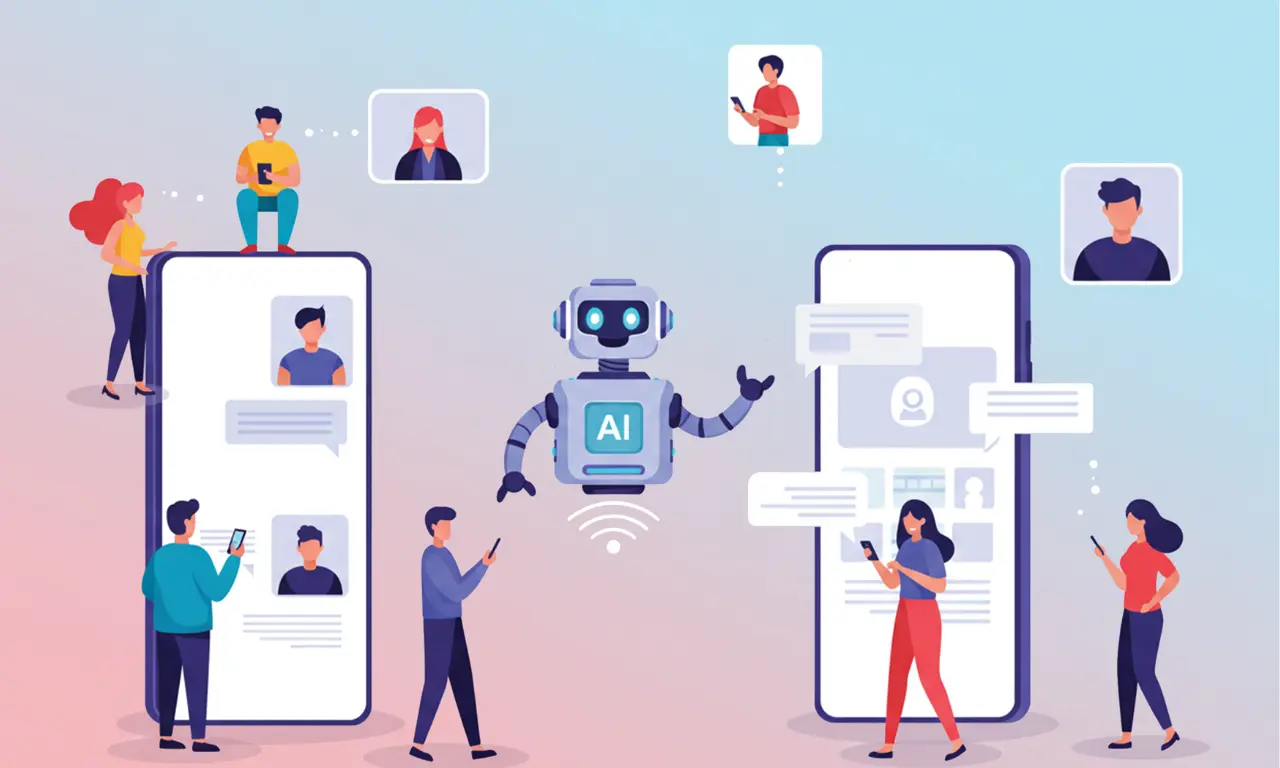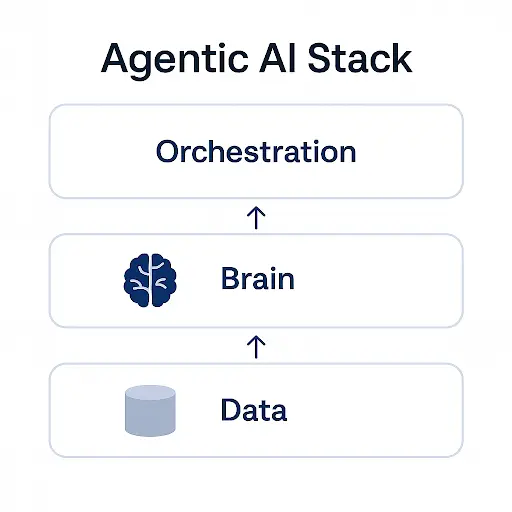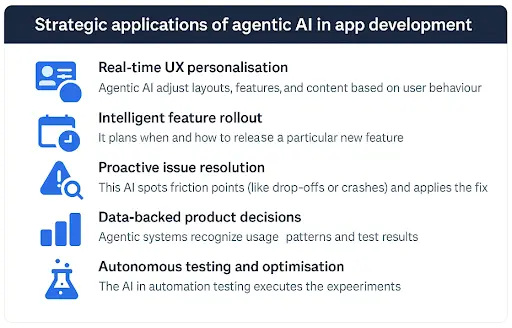How Agentic AI in App Development Brings 50% Faster Releases

Product roadmaps continue to expand, while release slots become increasingly constrained. Your teams juggle feature requests, bug queues, and security patches, yet delivery dates still slip. Does that sound familiar?
GitHub’s latest survey found that 63% of engineers already rely on AI coding assistants, and another 14% plan to start within a year. Separate research shows that these agents raise developer output by 55% and cut review time nearly in half. Gartner now predicts that 8 in 10 software teams will embed AI across their products by 2026.
These signals point to one conclusion: adopting agentic AI in app development is no longer optional. The result is faster cycles, cleaner code, and apps that learn from live behaviour rather than waiting for the next release window.
Let’s check out how autonomous AI agents for apps are changing the game!
The Delivery Gap: Why Most App Teams Miss Market Windows?
Think about the last feature you green-lit. By the time it reached users, their needs had already shifted. That lag is the real cost of today’s drawn-out cycles. Customers swipe away from apps that feel stale, and competitors roll out updates while your team is still merging pull requests.
The gap between market demand and delivery speed widens every quarter, and talent shortages compound the delay for 90% of teams[1]. Many leaders now see delivery speed as the clearest predictor of growth.
Agentic AI in app development speaks directly to that pressure. The sooner you close the gap between idea and release, the sooner you turn product vision into market share.
What Does Agentic AI in App Development Mean?
Agentic AI perceives and reasons with the purpose of planning and acting toward achieving goals without any human intervention. In software development, AI has moved from reactive to proactive.
Agentic AI frameworks can predict problems before they arise and solve them independently. This is the kind of intelligence that keeps your product smooth, your customers happy, and your teams focused on what matters most.

Here’s how agentic AI in app dev works:
-
Data-driven insight: It learns from user behaviour, analysing interactions to predict preferences and refine design or features.
-
Automation at scale: Tasks like bug detection, code generation, and testing are handled autonomously. Tools like GitHub Copilot and Devin already use this, where Devin can now independently test software, create full-stack apps, and address errors.
-
Smarter features: These next-generation intelligent and interactive app experiences include memory-enriched chatbots and voice assistants that take commands with contextual knowledge provided by autonomous AI agents for apps.
What Do the Industry Leaders Say?
“The AI revolution is a data revolution. Companies are struggling with vast amounts of data “trapped” across too many apps and silos, making it difficult to amalgamate into a single, useful dataset. With access to large quantities of data, using a hyperscale data engine like Salesforce’s Data Cloud, AI’s potential expands, especially when you can pair these new AI capabilities with your unstructured data.”
-Alice Steinglass, Salesforce’s EVP & General Manager[2]
How Does Agentic AI Change the App Development Flow?
Agentic AI introduces a new layer of intelligence to software development, offering genuine autonomy. It transforms development workflows into more efficient, adaptive, and outcome-driven processes.
Autonomous decision-making
Agentic AI analyses codebases, user data, and app metrics to choose optimal actions. These actions may involve tweaking UI components or adjusting feature logic to align with performance goals.
Moreover, agentic AI makes data actionable. Rather than relying on static dashboards, such systems interpret user metrics, A/B test results, and engagement patterns to recommend and implement real-time changes. Thus, the feedback loop is faster and smarter, and general teams can make sharper, evidence-based decisions.
Learn how product managers are leveraging agentic AI to drive feature alignment in product development.
Strategic planning
These systems map long-term objectives, such as feature rollouts or UX updates, into structured initiatives. They also dynamically rebalance priorities based on metrics or user feedback.
By 2028, 75% of enterprise software engineers[3] are projected to use AI assistants for this level of strategic planning, up from under 10% in 2023
Execution
Agentic AI handles full task cycles, from code deployment to automated testing and iteration. In many firms, up to 30% of development tasks[4] are now orchestrated by such agents, enabling faster deployment and higher quality.
Enhanced user experience
Today’s users want apps that understand them while responding. AI-enhanced user interfaces make that possible by analysing patterns across behaviour, preferences, and external data like seasonal trends or real-time social signals.
The result? Apps that offer suggestions and experiences that evolve with the user.
Innovation with new app ideas
Agentic AI does not limit itself to evolving what exists; it creates new ground for what comes next. Developers can now build apps that adapt to the real world and evolve after launch.
Whether it’s AR features that respond to context or systems that learn and optimise on their own, agentic AI brings a new era of intelligent, forward-thinking apps.
Did you know?
In 2025, Meta launched Devmate[5], an AI agent powered by Anthropic’s Claude, to automate multi-step coding tasks. The result? Engineers now complete tasks 50% faster, as Devmate autonomously handles debugging, code generation, and fixes, boosting productivity and freeing teams to focus on strategic development.
Inside an Agentic AI Stack: Data, Brain, and Orchestration
What does agentic AI in app development look like? Every autonomous AI agent for apps sits on three simple tiers.

1. Data layer
The stack starts with clean, real-time feeds: user clicks, crash logs, feature flags, and market signals. A fast pipe writes this data into a vector store or time-series database.
2. The brain
This is the planning engine. Large language models (LLMs), reinforced by an agentic AI framework such as Devin or Gemini Code Assist, read the data and map it to goals.
The brain sets tasks like “improve onboarding drop-off by five per cent” or “cut test failures to zero”. It reasons over code context, design tokens, and user journeys, then drafts the right changes.
3. Orchestration layer
The agent calls toolchains - CI pipelines, unit test runners, UI builders and checks results against success criteria. If tests fail, the loop starts again.
When targets are met, the stack opens a pull request or ships a hotfix. Because orchestration runs in minutes, apps learn and improve while users keep tapping.
With these three tiers working together, agentic AI in app development closes the gap between insight and release. Your team moves from post-mortem meetings to continuous wins, guided by data and driven by an AI brain that never sleeps.
Explore how the same stack architecture is transforming data analytics workflows.
Strategic Applications of Agentic AI in App Development
Agentic AI changes the way apps evolve - no more waiting on developers for every update. That’s why Gartner predicts over 80% of new software[6] will be written or co-written by AI by 2026.

Let’s see how teams are already using it to build smarter, faster, and more adaptive applications.
1. Real-time UX personalisation: Agentic AI adjusts layouts, features, and content based on user behaviour. Thus, it synthesises genuinely personalised experiences rather than something from a catalogue.
2. Intelligent feature rollout: It plans when and how to release a particular new feature depending on the user's readiness, engagement data, and business impact, maximising adoption and minimising churn.
3. Proactive issue resolution: Instead of waiting for issues to be communicated, this AI spots friction points (like drop-offs or crashes) and applies the fix before the user experiences them.
4. Data-backed product decisions: Agentic systems recognise usage patterns and test results and propose or implement product changes aligned with clear performance goals.
5. Autonomous testing and optimisation: From A/B testing to UI changes, the AI in automation testing executes the experiments, analyses the results, and applies the improvements, speeding up the release cycles without compromising on quality.
4 Challenges of Using Autonomous AI Agents for Apps
Agentic AI frameworks have immense potential, but adopting them isn’t as simple as flipping a switch. It demands rethinking how data, infrastructure, and accountability are handled across the product lifecycle.
Below are the key challenges that leaders must anticipate and actively address.
1. Ethical and privacy concerns
Agentic systems process huge volumes of user data to operate effectively. However, that comes with serious responsibilities.
Developers must implement clear permission flows, anonymise sensitive data, and make AI decisions explainable, especially in regulated industries where compliance lapses are costly.
2. Complexity and integration
Incorporating an autonomous agent usually means re-architecting how apps are built and maintained. The teams must be educated on AI tooling, the infrastructure must cater to dynamic workloads, and policies must define agent boundaries.
Integrating these systems with existing (often legacy) tech stacks adds another layer of complexity that can’t be ignored.
3. Bias and fairness
AI agents replicate patterns found in their training data, which means if your dataset reflects skewed or limited perspectives, your app will too.
If these products are not regularly audited with diverse input sources, unintended discrimination may surface in product experiences, harming user trust and brand reputation.
4. Dependence on data quality
Agentic AI functions on a constant feedback loop, so if your system ingests partial, noisy, or outdated data, so will the output be. Data pipelines must be continuously monitored, cleaned, and optimised to prevent AI from making inaccurate and unreliable decisions.
The Road Ahead: Future-Proofing your Business with Agentic AI
The future of agentic AI in app development is fundamentally different. There is less of a line between research and operations as agentic AI becomes more embedded. It will feel less like structured sprints and more like smart, ongoing growth during development cycles. We’re already at multi-agent systems that do the job for you!
We’re moving towards a future where the line between development and operations blurs. Where AI co-pilots will sit in every sprint planning, user feedback will auto-generate backlog items, and apps will debug autonomously.
In five years, your dream team might be part human, part hyper-intelligent code. A savvy product strategist, an inventive creative technologist, and three AI agents, one perfecting QA, another iterating designs in real time, and a third fine-tuning performance. No need for incessant coffee breaks!
Agentic AI Across Different Industries
The transformative power of Agentic AI is evident in how it's reshaping industries, facilitating intelligent, autonomous decision-making. Explore how it's being applied across sectors like healthcare, retail, education, legal, and more to drive innovation and efficiency.
How GrowthJockey Elevates Businesses with Agentic AI-Powered App Development
Agentic AI is quickly becoming an important part of app development. It lets developers create smarter, more effective, and more unique user experiences. Yes, there are challenges, but the benefits can give you no reason not to consider implementing Agentic AI in app development to future-proof your business.
At GrowthJockey, we help businesses embed agentic AI into their product DNA, from strategy to deployment, so they can innovate and scale. Our AI-driven approach ensures your apps keep up with the market.
FAQs on Agentic AI in App Development
1. What is agentic AI in app development?
Agentic AI in app development means embedding autonomous AI agents that plan, code, test, and refine features without waiting for human prompts. These agents read live product data, match it against release goals, and act in real time. The approach shortens build cycles, raises code quality, and lets teams focus on strategic roadmap work instead of routine fixes.
2. How do autonomous AI agents for apps cut release time?
Autonomous AI agents for apps plug into your CI/CD pipeline, generate code snippets, run unit tests, and open pull requests on their own. They watch error logs and user metrics, then iterate until targets are met. Teams using this model often report 40-60% faster cycle times because manual hand-offs disappear and every feedback loop runs continuously.
3. Which agentic AI frameworks are best for mobile and web teams?
Top agentic AI frameworks include GitHub Copilot for code generation, Devin for full-stack task planning, Intellsys.ai for data-driven orchestration, and Google’s Gemini Code Assist for enterprise safety controls.
Each framework pairs large language models with goal engines, providing developers with plug-and-play autonomy without requiring them to rebuild their entire toolchain. Choose based on language support, security posture, and integration lift.
4. Can AI in automation testing really improve app quality?
Yes. AI in automation testing crawls interfaces, writes dynamic test cases, and pinpoints regressions faster than scripted suites. It also feeds results back to agentic decision support systems, which patch or roll back code automatically. Teams adopting AI-driven testing see defect escape rates drop and user ratings climb because issues are fixed long before users notice them.








